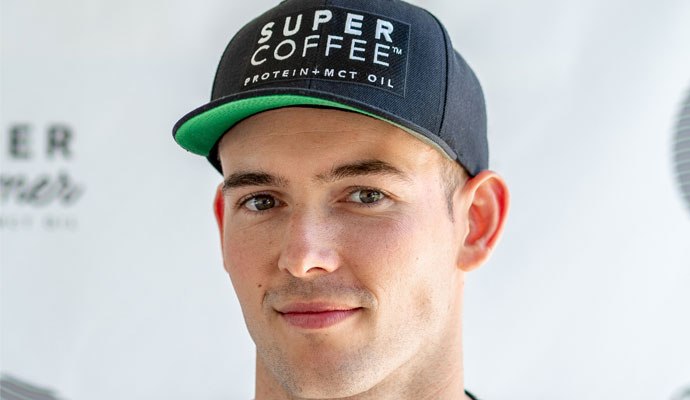How Howard Schultz’s Angel Poised Starbucks for Success
Few have resolved the tension between identity and growth as masterfully as the coffee chain’s CEO.
Starbucks has an angel on one shoulder and a devil on the other.
The angel works to guide Starbucks toward its better instincts: to retain the vision that impresario Howard Schultz had of re-creating a European café for an American (and now a worldwide) clientele, a “third place” that’s neither work nor home, where you can take your time, and where you pay more for coffee than you would at the deli down the street.
On the other shoulder, a devil whispers of the temptations of growth. The desire to grow pulls Starbucks, and all companies, toward the logic of scale — repeatability, robust processes, efficiency, speed. Growth in and of itself is a good thing; but it can go wrong if growth and scale come at the expense of vision, identity, or customer experience.
Few companies have resolved the tension between identity and growth as successfully as Starbucks. So as Schultz prepares to leaves the CEO post to head up the company’s new, ultra-upscale Starbucks Reserve venture, it’s worth reflecting on what he has accomplished — not just for coffee drinkers but for business thinkers — and why his vision can endure beyond his tenure.
Beyond Beans
Schultz was a master of what is now called service design long before the phrase came to be. Like the cafés Schultz sought to emulate, service design — what a business does to set and meet the expectations of the customers it wants — has its roots is Europe.
Everything about Starbucks — from the Italian names for small, medium, and large-size drinks to a carefully considered counter height that lets you see the baristas work to hundreds of combinations like half-caf-latte-with-two-shots that let you personalize your beverage to the nth degree — was designed to make the customer slow down and smell the coffee, in a distinctly European way.
As a product, coffee is a commodity, literally: Beans trade on futures exchanges. But Schultz decommoditized its consumption; Schultz knew that he was selling an experience, not just premium joe.
It’s Always Personal
Although it is replicated again and again in thousands of locations and for every customer that comes in the door, the experience Schultz designed feels personal. He muted the devil while being true to the angel and his own vision. These days, Starbucks is so ubiquitous and popular that pundit Fareed Zakharia joked in a recent address at The Ohio State University Fisher College of Business, “The line outside each Starbucks reaches all the way to the line outside the next Starbucks.”
In 2000, Schultz made his first attempt to walk away from his company, only to return to Starbucks eight years later when it became clear that growth and profits were tailing off. In a tactful memorandum, he said that his successors had gone astray in a bid to streamline store design to meet financial goals. In fact, he wrote, the focus on financials had hurt the company because its shops “no longer have the soul of the past and reflect a chain of stores vs. the warm feeling of a neighborhood store.” The demands of the devil had drowned out the advice of the angel. Schultz set to restoring the quality and essence of the Starbucks experience, and soon restored profitability and growth, too.
Starbucks is but one example of how specialty retail on a vast scale has triumphed because of service design. Victoria’s Secret, IKEA, the Apple Store, Williams Sonoma, and others create a special experience their rivals can’t match — a combination of product offerings, physical design, and brand image that make customers feel that the store is theirs, even as it serves millions of others.
Setting a Standard
The power of Schultz’s philosophy can be seen in the fact that rivals often define themselves in response to it. Dunkin’ Donuts is in many ways the anti-Starbucks: Consider its hot pink and orange logo vs. Starbucks’ soothing green, its brightly lit vs. dim shops, its get-up-and-go-vibe vs. a relaxed and library-like atmosphere. Everything about Dunkin’ says “grab and go,” from its catchphrase “America runs on Dunkin’” to its less-than-cozy seats; everything about Starbucks whispers, “stay and sit.”
Fresh and Hot
Ah, but what of the devil of growth? How do you find ways to appease him when you already have a store on every corner? You could throw innovation at the problem: new services, add-ons, line extensions, more things to sell on the same real estate. Such tactics can work, but they can also unhinge your company if they come at the expense of your unique value proposition. Upscale restaurant chains lose their cachet (and their customers) by trying to go mass market; quick-service joints lose their appeal with overly complicated and time-consuming concoctions.
Howard Schultz set to restoring the quality and essence of the Starbucks experience, and soon restored profitability and growth, too.
Indeed, when Schultz returned to Starbucks in 2008, it was because the essential customer experience he had envisioned and designed was on the verge of being lost. He kept his vision perking by taking steps to energize and engage the people who are responsible for bringing his design to life. In 2008, going back to basics, he ordered a three-hour shutdown of every store in the U.S. to retrain staff on coffee quality.
Seven years later, he took another action unprecedented for a massive food-and-beverage retailer: He invested in his front line. Starbucks offered full-time employees complete tuition reimbursement, up to the entire cost of a bachelor’s degree, for online courses at Arizona State University. Not only is this a significant benefit for his workers, the hope is that it will also fuel new ideas and new warmth in Starbucks stores.
The Real Star
So what to make of Schultz’s — and Starbucks’ — next act? After stepping down in April, Schultz will help launch Starbucks Reserve — upscale roasteries with tasting rooms for the true coffee aficionado, where a mug of coffee might cost the same as a glass of cabernet at a wine bar. Some say his new vision for an upscale coffee chain is misguided and misreads the zeitgeist. We wouldn’t bet against him — and not just because he has won (and won big) twice before.
At Starbucks Reserve, the coffee will be the supporting actor to the experience. If someone will pay five times more to fly first class than to fly coach — and arrive no faster than the passenger in seat 34B — well, someone will pay five times more for coffee, too. Starbucks Reserve will no doubt reflect Schultz’s ability to use service design to marry strategy, execution, and ruthless devotion to customer experience.
And what of the mother ship? Schultz’s successor, Kevin Johnson, joined the board in 2009, became president and COO in 2015, and “drives Starbucks’ global growth agenda across the enterprise…with a focus on partner (employee) and customer-facing innovations,” according to the company. In other words, he has been overseeing the very investments in innovation and human capital that are Schultz’s newest contribution to leadership.
Naysayers predict that Starbucks will once again suffer without Schultz at the helm. They also believe that the new premium brand will cannibalize sales of the old — or at least make it seem more of a commodity producer. It’s Johnson’s mandate to prevent that.
As someone who joined the board after Schultz’s return, Johnson has seen, endorsed, and been part of the turnaround. He comes from a technology background, and the typical technologist’s love for experimentation at every point of customer contact — including product offerings and payment methods — will likely serve him well. Provided, that is, Johnson listens to his better angel and ignores the entreaties of the other.
Stewart and O’Connell are coauthors of Woo, Wow, and Win: Service Design, Strategy, and the New Art of Customer Delight(Harper Business, 2016).




